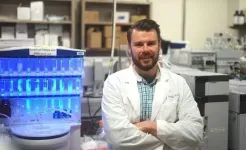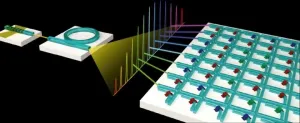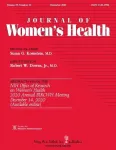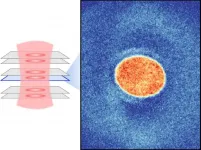(Press-News.org) LA JOLLA--New data suggest that nearly all COVID-19 survivors have the immune cells necessary to fight re-infection.
The findings, based on analyses of blood samples from 188 COVID-19 patients, suggest that responses to the novel coronavirus, SARS-CoV-2, from all major players in the "adaptive" immune system, which learns to fight specific pathogens, can last for at least eight months after the onset of symptoms from the initial infection.
"Our data suggest that the immune response is there--and it stays," LJI Professor Alessandro Sette, Dr. Biol. Sci., who co-led the study with LJI Professor Shane Crotty, Ph.D., and LJI Research Assistant Professor Daniela Weiskopf, Ph.D.
"We measured antibodies, memory B cells, helper T cells and killer T cells all at the same time," says Crotty. "As far as we know, this is the largest study ever, for any acute infection, that has measured all four of those components of immune memory."
The findings, published in the January 6, 2021, online edition of Science, could mean that COVID-19 survivors have protective immunity against serious disease from the SARS-CoV-2 virus for months, perhaps years after infection.
The new study helps clarify some concerning COVID-19 data from other labs, which showed a dramatic drop-off of COVID-fighting antibodies in the months following infection. Some feared that this decline in antibodies meant that the body wouldn't be equipped to defend itself against reinfection.
Sette explains that a decline in antibodies is very normal. "Of course, the immune response decreases over time to a certain extent, but that's normal. That's what immune responses do. They have a first phase of ramping up, and after that fantastic expansion, eventually the immune response contracts somewhat and gets to a steady state," Sette says.
The researchers found that virus-specific antibodies do persist in the bloodstream months after infection. Importantly the body also has immune cells called memory B cells at the ready. If a person encounters SARS-CoV-2 again, these memory B cells could reactivate and produce SARS-CoV-2 antibodies to fight re-infection.
The SARS-CoV-2 virus uses its "spike" protein to initiate infection of human cells, so the researchers looked for memory B cells specific for the SARS-CoV-2 spike. They found that spike-specific memory B cells actually increased in the blood six months after infection.
COVID-19 survivors also had an army of T cells ready to fight reinfection. Memory CD4+ "helper" T cells lingered, ready to trigger an immune response if they saw SARS-CoV-2 again. Many memory CB8+ "killer" T cells also remained, ready to destroy infected cells and halt a reinfection.
The different parts of the adaptive immune system work together, so seeing COVID-fighting antibodies, memory B cells, memory CD4+ T cells and memory CD8+ T cells in the blood more than eight months following infection is a good sign.
"This implies that there's a good chance people would have protective immunity, at least against serious disease, for that period of time, and probably well beyond that," says Crotty.
The team cautions that protective immunity does vary dramatically from person to person. In fact, the researchers saw a 100-fold range in the magnitude of immune memory. People with a weak immune memory may be vulnerable to a case of recurrent COVID-19 in the future, or they may be more likely to infect others.
"There are some people that are way down at the bottom of how much immune memory they have, and maybe those people are a lot more susceptible to reinfection," says Crotty.
"It looks like people who have been infected are going to have some degree of protective immunity against re-infection," adds Weiskopf. "How much protection remains to be established."
The fact that immune memory against SARS-CoV-2 is possible is also a good sign for vaccine developers. Weiskopf emphasizes that the study tracked responses to natural SARS-CoV-2 infection, not immune memory after vaccination.
"It is possible that immune memory will be similarly long lasting similar following vaccination, but we will have to wait until the data come in to be able to tell for sure," says Weiskopf. "Several months ago, our studies showed that natural infection induced a strong response, and this study now shows that the responses lasts. The vaccine studies are at the initial stages, and so far have been associated with strong protection. We are hopeful that a similar pattern of responses lasting over time will also emerge for the vaccine-induced responses."
The researchers will continue to analyze samples from COVID-19 patients in the coming months and hope to track their responses 12 to 18 months after the onset of symptoms.
"We are also doing very detailed analyses at a much, much higher granularity on what pieces of the virus are recognized," says Sette. "And we plan to evaluate the immune response not only following natural infection but following vaccination."
The team is also working to understand how immune memory differs across people of different ages and how that may influence COVID-19 case severity.
INFORMATION:
The study, "Immunological memory to SARS-CoV-2 assessed for up to eight months after infection," included first authors Jennifer M. Dan, Jose Mateus and Yu Kato, as well as Kathryn M. Hastie, Caterina E. Faliti, Sydney I. Ramirez, April Frazier, Esther Dawen Yu, Alba Grifoni, Stephen A. Rawlings, Bjoern Peters, Florian Krammer, Viviana Simon, Erica Ollmann Saphire and Davey M. Smith.
This research was supported by the National Institutes of Health's National Institute for Allergy and Infectious Disease (awards AI142742 and AI135078, contracts 75N9301900065 and HHSN272201400008C), the John and Mary Tu Foundation, UCSD T32s AI007036 and AI007384 Infectious Diseases Division, the Bill and Melinda Gates Foundation INV-006133 from the Therapeutics Accelerator, Mastercard, Wellcome, a FastGrant from Emergent Ventures in aid of COVID-19 research, the Collaborative Influenza Vaccine Innovation Centers (CIVIC) contract 75N93019C00051, the JPB foundation, the Cohen Foundation, the Open Philanthropy Project (#2020-215611), as well as private philanthropic contributions.
DOI: 10.1126/science.abf4063
About La Jolla Institute for Immunology
The La Jolla Institute for Immunology is dedicated to understanding the intricacies and power of the immune system so that we may apply that knowledge to promote human health and prevent a wide range of diseases. Since its founding in 1988 as an independent, nonprofit research organization, the Institute has made numerous advances leading toward its goal: life without disease.
Drug-resistant bacteria could lead to more deaths than cancer by 2050, according to a report commissioned by the United Kingdom in 2014 and jointly supported by the U.K. government and the Wellcome Trust. In an effort to reduce the potential infection-caused 10 million deaths worldwide, Penn State researcher Scott Medina has developed a peptide, or small protein, that can target a specific pathogen without damaging the good bacteria that bolsters the immune system.
Medina, an assistant professor of biomedical engineering, led the team who published its results Jan. 4 in Nature Biomedical Engineering.
"One of the best protective mechanisms we have to prevent infection are beneficial bacteria that inhabit our bodies, known as commensals," ...
Ikoma, Japan - Ultrasmall integrated circuits have revolutionized mobile phones, home appliances, cars, and other everyday technologies. To further miniaturize electronics and enable advanced functions, circuits must be reliably fabricated in three dimensions. Achieving ultrafine 3D shape control by etching into silicon is difficult because even atomic-scale damage reduces device performance. Researchers at Nara Institute of Science and Technology (NAIST) report, in a new study seen in Crystal Growth and Design, silicon etched to adopt the shape of atomically smooth pyramids. Coating these silicon pyramids with a thin layer of iron imparts ...
ITHACA, N.Y. - For more than seven years, a mysterious wasting disease has nearly killed off sea star populations around the world. Some of these species stand at the brink of extinction.
New Cornell University-led research suggests that starfish, victims of sea star wasting disease (SSWD), may actually be in respiratory distress - literally "drowning" in their own environment - as elevated microbial activity derived from nearby organic matter and warm ocean temperatures rob the creatures of their ability to breathe.
"As humans, we breathe, we ventilate, we bring air into our lungs ...
In the digital age, data traffic is growing at an exponential rate. The demands on computing power for applications in artificial intelligence such as pattern and speech recognition in particular, or for self-driving vehicles, often exceeds the capacities of conventional computer processors. Working together with an international team, researchers at the University of Münster are developing new approaches and process architectures which can cope with these tasks extremely efficient. They have now shown that so-called photonic processors, with which data is processed by means of light, can process information much more rapidly and in parallel - something ...
Young adults ages 18-24 years old in the U.S. say that porn is their most helpful source of information about how to have sex, according to a new study led by a Boston University School of Public Health (BUSPH) researcher published in the journal Archives of Sexual Behavior.
In the nationally representative survey, a quarter of young adults said porn was their most helpful source of information about how to have sex. Slightly less than a quarter said sexual partners were the most helpful source, and fewer pointed to friends, parents, media, or healthcare professionals. However, female respondents were much more likely than male respondents to report that their partners ...
2020 was an eventful year, with science at the front and center of most news cycles. As this seemingly long year wraps up, Chemical & Engineering News (C&EN), the weekly newsmagazine of the American Chemical Society, is highlighting the biggest chemistry stories, top research trends and predictions for the coming year.
Predictably, research on the novel coronavirus was the biggest chemistry story of the year, beginning in January when the genetic code for SARS-CoV-2 was published. Since then, thousands of papers have been published on the subject, with topics like mask efficacy, disinfectants and virus transmission getting the most attention. Other popular chemistry subjects included new insights about the atmospheres of other planets and how climate change fueled ...
Cardiovascular disease is the leading cause of death associated with smoking cigarettes. But as use of e-cigarettes ("vaping") becomes more popular, including as a way to cut back on cigarettes, little is known about its effect on cardiovascular health.
Now, a new Boston University School of Public Health (BUSPH) study, published in the journal Circulation, finds that vaping may not cut risk of cardiovascular disease in the way that most adults use them--in combination with cigarettes.
"Dual use of cigarettes and e-cigarettes appears to be as harmful to cardiovascular health as exclusive cigarette smoking," says study lead author Dr. Andrew Stokes, assistant professor of global health at BUSPH.
Stokes ...
New Rochelle, NY, January 6, 2021--Women physicians feel pressured to spend more time in work-related citizenship tasks, based largely on their age and race. Nearly half of women perceived that they spent more time on citizenship tasks than their male colleagues, according to a study in Journal of Women's Health. Click here to read the article now.
"When compared to their younger counterpart, women physicians older than 49 years stated to feel obligated to volunteer for these tasks because of their age," state Priscila Armijo, MD, University of Nebraska Medical Center, and coauthors. "We also found that a higher proportion of women of color physicians perceived race as a factor in feeling obligated to volunteer for work-related citizenship ...
They are as thin as a hair, only a hundred thousand times thinner--so-called two-dimensional materials, consisting of a single layer of atoms, have been booming in research for years. They became known to a wider audience when two Russian-British scientists were awarded the Nobel Prize in Physics in 2010 for the discovery of graphene, a building block of graphite. The special feature of such materials is that they possess novel properties that can only be explained with the help of the laws of quantum mechanics and that may be relevant for enhanced ...
Starting as a single cell, organisms undergo millions of generations of divisions to ultimately generate the bones, heart, brain and other components that make up a living being. The mainspring within this intricate process is the transfer of DNA through each subsequent cell split within discrete packets called chromosomes.
It's critical that all chromosomes are duplicated and precisely distributed through every generation of cell division. If the inherited chromosome components are altered, even slightly, birth defects and certain cancers can result.
A new study published in the journal Science by postdoctoral scholar Pablo Lara-Gonzalez, Division of Biological Sciences Professor Arshad Desai and their colleagues addresses ...



